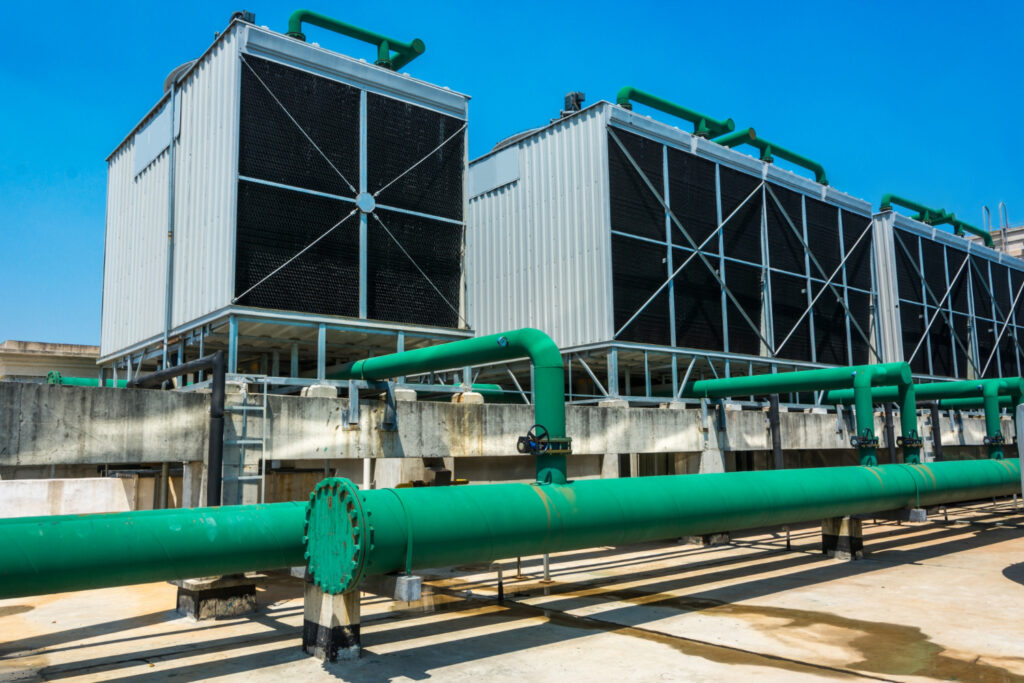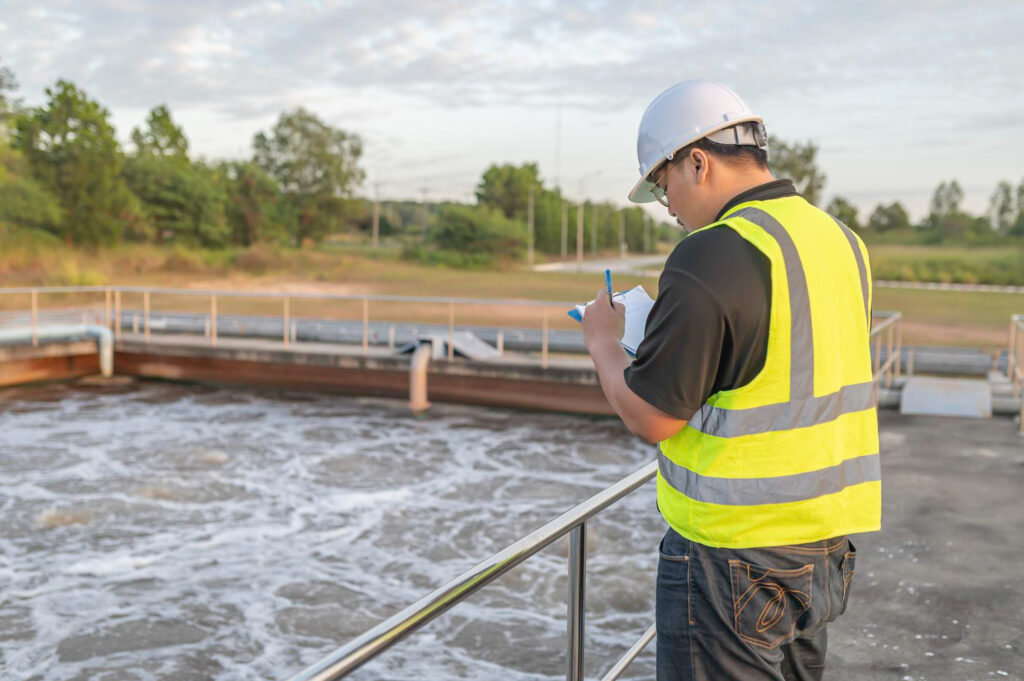Water and Wastewater Management in the Digital Age: Data’s Role in Sustainability
In an era where digital innovations are reshaping industries, water and wastewater management stands at the forefront of change.
With growing concerns about resource scarcity, environmental impact, and regulatory compliance, the need for data-driven solutions has become paramount. As the world grapples with these challenges, cutting-edge technologies like CIPO’s construction management software are emerging as the backbone of sustainable water and wastewater management strategies.
The Digital Transformation of Water and Wastewater Management
In an age defined by technological advancements, the realm of water and wastewater management is undergoing a profound digital transformation. As societies grapple with escalating water scarcity concerns, environmental sustainability challenges, and increasingly complex regulatory landscapes, the integration of cutting-edge digital solutions has emerged as a pivotal strategy. This digital evolution, characterized by data-driven innovations, is reshaping the way water and wastewater resources are monitored, managed, and conserved, ultimately contributing to a more resilient and sustainable future.
Traditionally, the water and wastewater industry has relied on manual processes and outdated systems to oversee the intricate network of water supply, treatment, distribution, and waste disposal. However, these methods often fall short in providing real-time insights, efficient resource allocation, and effective decision-making. With the advent of advanced technologies such as Internet of Things (IoT) sensors, data analytics, and cloud computing, a new era of data-driven water and wastewater management has dawned.
The heart of this transformation lies in the ability to collect, process, and analyze vast amounts of data generated by sensors and connected devices throughout the water infrastructure. This wealth of data offers unprecedented visibility into various facets of the water cycle, including consumption patterns, distribution network efficiency, and treatment plant performance. With this granular understanding, utilities and agencies can make informed decisions that optimize operations, reduce waste, and enhance overall system resilience.
Furthermore, the integration of data analytics tools, powered by artificial intelligence and machine learning, enables predictive insights. This predictive capability empowers water and wastewater professionals to anticipate potential issues before they escalate into costly problems. For instance, predictive maintenance algorithms can identify equipment anomalies and wear patterns, allowing for timely interventions and preventing costly breakdowns.
The impact of the digital transformation extends beyond operational efficiency—it encompasses environmental stewardship and regulatory compliance as well. With stringent environmental regulations in place, water and wastewater agencies must adhere to rigorous standards to ensure public health and ecological preservation. Data-driven solutions enable continuous monitoring of water quality parameters, enabling swift responses to deviations and safeguarding the integrity of water resources.
In the context of the United States, where water scarcity concerns have gained prominence in regions like the western states, data-driven water management becomes an essential tool for sustainable resource allocation. The ability to analyze historical consumption data and forecast future demand patterns aids in identifying opportunities for conservation and efficient usage. This, in turn, supports local communities in maintaining adequate water supplies even in the face of changing climate conditions.

As the digital transformation progresses, public engagement and transparency also witness a paradigm shift. The availability of real-time data allows utility providers to communicate consumption trends, water quality reports, and sustainability initiatives directly to the public. This heightened transparency fosters a sense of partnership between utilities and the communities they serve, encouraging more conscious water usage behaviors.
Navigating Regulatory Complexity with Data Insights
In the intricate landscape of water and wastewater management, the regulatory environment has grown increasingly complex, necessitating a strategic approach that relies on data-driven insights. As environmental regulations evolve and become more stringent, water utilities and agencies across the United States face the critical task of not only achieving compliance but also minimizing their ecological footprint. In this context, leveraging advanced data analytics provided by modern solutions like CIPO’s construction management software has emerged as a powerful strategy for navigating the intricacies of regulatory compliance while enhancing overall operational efficiency.
The regulatory landscape governing water and wastewater management is marked by an array of standards, guidelines, and mandates set forth by federal, state, and local authorities. The multifaceted nature of these regulations often poses challenges for utilities as they strive to balance operational needs with adherence to compliance requirements. Failure to meet these standards can result in severe consequences, including fines, legal repercussions, and reputational damage. Thus, it becomes imperative for utilities to adopt a comprehensive and proactive approach that harnesses the capabilities of data-driven insights.
CIPO’s software empowers water and wastewater utilities with the means to gather, organize, and analyze data related to compliance parameters. By integrating real-time monitoring capabilities, the software offers a continuous stream of information on water quality, treatment processes, discharge levels, and more. This constant data flow not only enables utilities to stay informed about their current compliance status but also provides early warnings of potential deviations that might trigger regulatory non-compliance.
The predictive analytics features embedded within CIPO’s software further amplify its role in regulatory navigation. These analytics leverage historical data patterns to forecast potential scenarios and identify trends that could impact compliance. For instance, predictive modeling can anticipate the impact of seasonal variations, weather events, or changes in water source quality on treatment processes and discharge limits. Armed with these insights, utilities can proactively adjust their operations, implement contingency plans, and mitigate compliance risks.
Furthermore, CIPO’s data-driven approach facilitates accurate and timely reporting to regulatory agencies. Automated data collection and reporting streamline the often cumbersome process of compiling compliance-related information, reducing the risk of errors and oversights. This streamlined reporting not only saves time and resources but also ensures that regulatory authorities receive accurate and up-to-date information, fostering transparency and trust.
Predictive Maintenance and Asset Management
As the industry continues to embrace digital innovations, water utilities and agencies across the United States are harnessing the power of data-driven insights to revolutionize asset management. The integration of cutting-edge solutions like CIPO’s construction management software paves the way for proactive maintenance practices, increased operational efficiency, and extended asset lifecycles.
Historically, asset maintenance in the water sector has been governed by reactive approaches, where equipment is repaired or replaced only after failure occurs. This reactionary methodology often leads to unscheduled downtime, increased repair costs, and compromised service delivery. Predictive maintenance offers a paradigm shift, leveraging data analytics to anticipate equipment failures before they happen, allowing for timely interventions and optimal resource allocation.
CIPO’s software capitalizes on the principles of predictive maintenance through continuous data collection and analysis. By incorporating IoT sensors and monitoring devices, the software tracks asset performance metrics such as vibration, temperature, pressure, and operational cycles. These real-time data points serve as indicators of equipment health, enabling utilities to identify subtle changes or anomalies that could signify impending issues.
The predictive analytics engine within CIPO’s software processes this data, leveraging machine learning algorithms to recognize patterns and correlations between asset conditions and historical failures. As these algorithms evolve, they become increasingly accurate in predicting when maintenance is needed, allowing utilities to schedule interventions during planned downtimes rather than in the midst of emergencies.
The benefits of predictive maintenance extend beyond cost savings and operational efficiency. By preemptively addressing issues, utilities can extend the lifespan of their assets, postponing capital-intensive replacements and reducing the environmental impact of discarded equipment. This aligns with the broader goals of sustainability and responsible resource management.
Leveraging Data for Long-Term Sustainability Planning
Long-term sustainability planning in the water sector encompasses a multifaceted array of considerations, ranging from water availability and quality to infrastructure investment and climate resilience. Traditionally, these planning efforts were informed by historical trends and forecasts based on limited datasets. However, the emergence of data-driven solutions has revolutionized the planning landscape, allowing for more precise, informed, and forward-looking decisions.

Conclusion: Pioneering a Data-Driven Water Future for Long-Term Prosperity
In the grand tapestry of water and wastewater management, a remarkable transformation is underway—a transformation powered by data. As the United States faces the complex interplay of population growth, environmental concerns, and regulatory pressures, the integration of data-driven strategies is forging a new path toward long-term sustainability and prosperity.
From the pioneering concept of predictive maintenance to the intricate landscape of regulatory compliance, the digital age has ushered in solutions that transcend the limitations of traditional methodologies.
CIPO’s construction management software stands at the forefront of this transformation, offering utilities and agencies the tools they need to harness the potential of data for the greater good.
Through the lens of predictive maintenance, assets that were once seen as mere components have become nodes of intelligence, capable of foretelling their own health. The era of reactive repairs is giving way to a proactive paradigm where assets communicate their needs, enabling utilities to act strategically and extend the lifespans of critical infrastructure.
In the realm of regulatory complexity, data emerges as a powerful ally. CIPO’s software empowers utilities to navigate the intricate maze of compliance by offering real-time insights, enabling proactive adjustments, and ensuring timely reporting.
The result is a more efficient, transparent, and accountable approach to meeting the stringent standards that safeguard our communities and ecosystems.
Sustainability planning, once a challenge rooted in uncertainty, has been revolutionized by data. CIPO’s software empowers utilities to chart courses of action based on accurate forecasts, scenario modeling, and strategic insights. The software doesn’t just predict—it empowers utilities to shape a future where water resources are optimized, infrastructure is resilient, and the environment is safeguarded.
In the United States, a nation blessed with diverse water landscapes, the role of data-driven strategies becomes even more crucial. From arid regions seeking to conserve every drop to regions grappling with climate uncertainties, CIPO’s software adapts and empowers utilities to craft tailor-made solutions that resonate with their unique challenges and aspirations.
As we navigate the 21st century, the convergence of data and water holds the promise of a more sustainable, resilient, and prosperous future. CIPO’s construction management software encapsulates this promise—a promise that every drop of data can lead to a wave of positive change.
By embracing data’s potential, we are not only safeguarding our most precious resource but also ensuring that future generations inherit a world where water flows sustainably, communities thrive, and ecosystems flourish. The journey toward this vision is one guided by data, driven by innovation, and fueled by the collective commitment to a brighter water future.
Data-driven water management enhances environmental sustainability by enabling early detection of pollutants, optimizing resource usage, and supporting conservation efforts. These practices help preserve aquatic ecosystems and protect water quality.
By monitoring real-time data on water quality and infrastructure performance, water utilities can identify potential contamination risks and address them promptly, ensuring that the water delivered to households remains safe for consumption.
Data resilience involves safeguarding digital infrastructure to ensure uninterrupted data collection and analysis, even during disruptions like cyberattacks or natural disasters. This resilience ensures that utilities can maintain operations and respond effectively to emerging challenges.
Through data analytics, utilities can model the potential impact of disasters on water systems, enabling them to devise effective emergency response plans. Real-time data monitoring also provides rapid insights during emergencies, facilitating swift decision-making.
Data-driven insights allow utilities to identify disparities in water access and usage among various communities. By pinpointing underserved areas, utilities can allocate resources more equitably, ensuring all residents have reliable access to clean water.


Leave a Reply